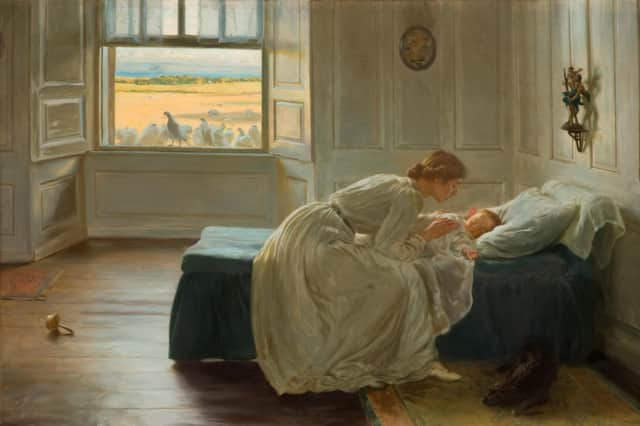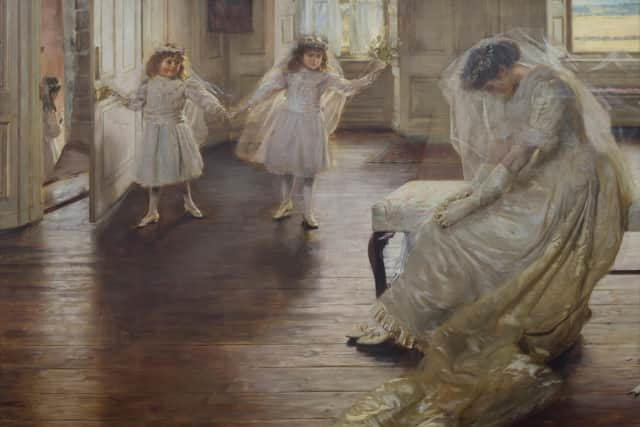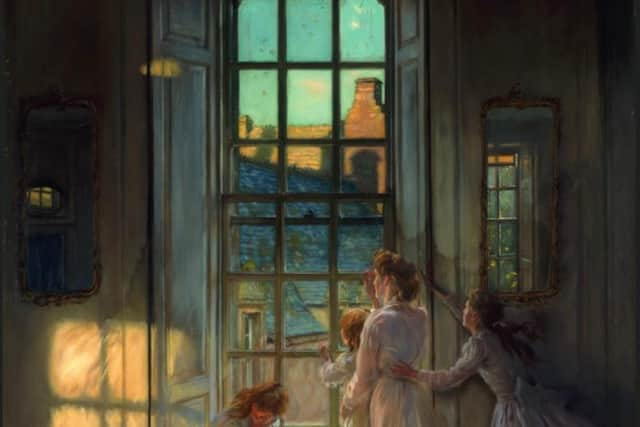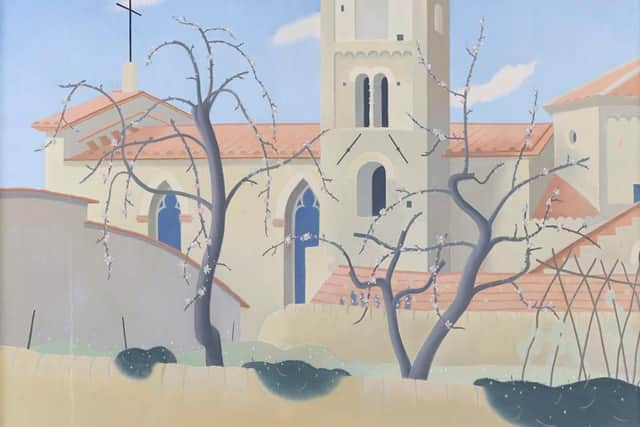Art reviews: Reflections: The Light and Life of John Henry Lorimer | Barbara Balmer


Reflections: The Light and Life of John Henry Lorimer, Edinburgh City Art Centre *****
Barbara Balmer, The Fine Art Society, Edinburgh ****
Very few British artists ever won medals at the Paris Salon, but John Henry Lorimer won not one but several and in 1893 his Fête de Gran’mère, Benedicité was bought by the French state. That was a rare honour for a British artist and also the reason it has a French title. For all these marks of distinction, Lorimer’s success in France was not really matched at home and even before his death in 1936 he was almost forgotten. Now, however, Edinburgh City Art Centre has again come to the rescue of an unjustly neglected Scottish artist with a show called Reflections: The Light and Life of John Henry Lorimer.


Advertisement
Hide AdLorimer was one of six children. Their father, James Lorimer, professor of public law at Edinburgh University, was a pioneer of international law, human rights and women’s rights. In 1878 he and his wife, Hannah Stodart, took a lease on Kellie Castle in Fife. There are fine portraits of both of them in the show. Kellie was ruinous, but they restored it and it is now a treasure of the National Trust. John Henry’s sisters, Hannah, Louise and Alice were among the first women students at Edinburgh University where his mother, also attended classes. His sister Hannah was also a talented artist though she is even more forgotten than John Henry. Their architect younger brother Robert, later Sir Robert, is the best known of the siblings.
John Henry Lorimer made his living as a professional portrait painter. Half of his pictures in public collections are of successful, elderly men in suits or ceremonial robes, but some like the portrait of his father are striking nonetheless. His best known work, hitherto, however is probably the Ordination of the Elders in the National Gallery and it is indeed impressive. In a brightly lit kirk, a group of elders is gathered round the minister, his hands raised in blessing. Solemn and beautifully painted, his handling of light is typically sophisticated.
The selection here suggests, however, that his best and most individual work was inspired by Kellie Castle and the Lorimer family life centred on it. As well as portraits of his sisters, they and his nephews and nieces appear regularly in the narrative pictures that were his main interest and which are mostly set in Kellie. A wall mirror, one of a pair that appear regularly in the paintings and one or two other bits of furniture have been included in the show. As we recognise such bits of furniture and the rooms in which the pictures are set, it gives a strange intimacy to the show as though we are witnesses of life at Kellie.
Some of the pictures are scenes of ordinary life, or seem to be. A Peaceful Art, for instance, one of his most successful paintings, is set in a window at Kellie where his sister Hannah is making a curtain. Louise is working on embroidery while their mother reads to them. There is a golden autumn light through the window and Louise is drawing out a long thread which catches it. The three women are the three Fates, for an open pair of scissors, prominent in the foreground, is lying ready to snip off the thread as the three fates snipped off a human life. A yarn winder, a spinning wheel, a grandfather clock and a mirror all add to the symbolism of time, fate and transience.


In The Birthday Party a little girl carrying a candle and clearly struck with wonder is walking alone along a chain of roses towards her birthday cake surrounded by candles. It is in a window and there is sunlight beyond. She is walking towards her future. A maid holds the door to a spiral, stone staircase where a little boy is keen to get in. The room is identifiably Kellie and the door, the stone staircase and window appear again in the same relationship in The Eleventh Hour, a very different picture. Its alternative title was Mariage de Convenance and a bride is sitting on an ottoman in an agony of doubt while two little bridesmaids innocently encourage her towards the door. An open window and sunlight beyond suggest she might still flee the loveless marriage that awaits her, symbolised by the steep stone stair beyond the door. Even the ottoman appears in both pictures. They were painted three years apart but it is almost as though the painter intended a “before” and “after” – a vision of innocence and experience. This kind of symbolism is typical of the Pre-Raphaelites and they were an important part of his inspiration. He especially admired Millais, but it is Holman Hunt’s Light of the World that seems to have inspired Fête de Gran’mère. In Hunt’s picture there is both moonlight and candlelight. Lorimer puts them together in the same way, but also quite beautifully. His picture is not a religious subject as Hunt’s is, but there is nevertheless a sweet piety in it as grace is said and the children seated around the table bow their heads.
Lorimer explores the same complex lighting in Spring Moonlight where a mother dances with her baby in a similar mix of moonlight and candlelight. The Flight of the Swallows in is perhaps Lorimer’s masterpiece, however. Through a window at Kellile, a woman, probably Alice, and three of her children watch the departing swallows mark the end of summer. They are lit by the evening sun from an unseen window behind us while beyond them it caches the towers of Kellie. It is picture of quite exquisite mood. A sunlit window is prominent in Hush, too, as a mother tries to get her baby to sleep in spite of the summer sun still shining on the fields outside. Other pictures are just of windows like the lovely painting, Interior Iona, looking out onto a new moon and a blue-tinted dusk. Such pictures demonstrate that Lorimer is an artist well worth recovering. The Lorimer family have worked hard to bring it about and congratulations yet again to the Edinburgh City Art Centre.
Advertisement
Hide AdBarbara Balmer who died four years ago is not as forgotten as Lorimer was, but she is certainly not as well known as she should be so a show at the Fine Art Society is a welcome chance to look again at her quietly beautiful paintings. They are mostly quite big and seem at first to be painted in a flat, almost patterned way, but this is deceptive. The colour is very subtly graduated and in composition they balance beautifully space and pattern. In Little May Tree, for instance, a small tree framed by an arch of honeysuckle is silhouetted against a pale sky. The strongest tints are blue sky above, green grass and pink stone below. They make a chord and the rest of the picture modulates exquisitely within the key it sets. Interior Mensano, a painting of bright daylight in an Italian bedroom does something similar with blue, white and ochre. Moonlight, Hackness Parish Church is a magical evocation of a churchyard seen through a silver screen of moonlit leaves.
Reflections: The Light and Life of John Henry Lorimer until 20 March; Barbara Balmer until 23 December


A message from the Editor:
Advertisement
Hide AdThank you for reading this article. We're more reliant on your support than ever as the shift in consumer habits brought about by coronavirus impacts our advertisers.
If you haven't already, please consider supporting our trusted, fact-checked journalism by taking out a digital subscription at https://www.scotsman.com/subscriptions